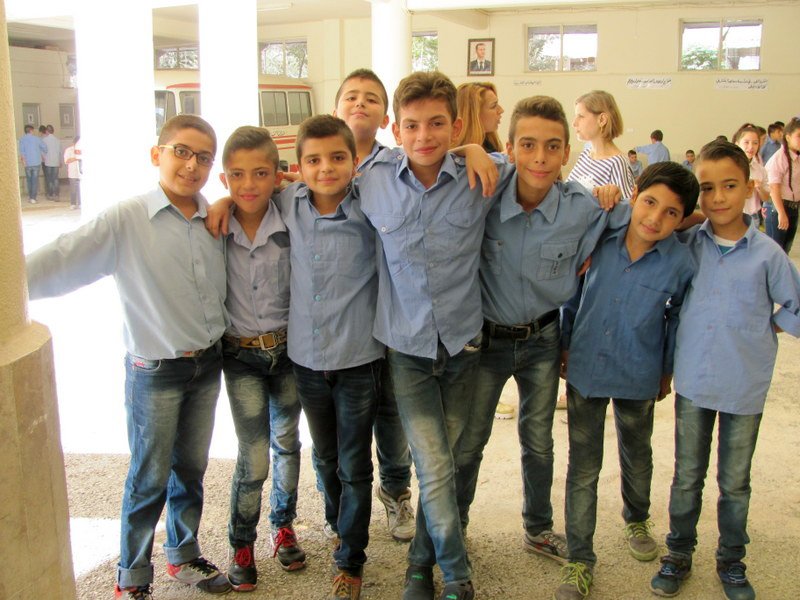|
ACN funds slate of new projects to help Christians in Syria With aid funneled through local Churches, vulnerable members of the Muslim population are also among the beneficiaries. By Maria Lozano NEW YORK—To bring relief to the traumatized Christian community in Syria, international Catholic charity Aid to the Church in Need (ACN) has committed to funding 32 projects for a total of more than $1M. With a focus on major urban centers like Homs, Aleppo, and Damascus, the projects are designed to shore up humanitarian and pastoral resources on behalf of those Christians who have remained in Syria during six years of war. With aid funneled through local Churches, vulnerable members of the Muslim population are also among the beneficiaries.
Syria has dropped from the news headlines to a certain extent, but the situation in the country remains extremely difficult. There is massive destruction to the country’s infrastructure and the trauma of brutal warfare has left people—especially the young—with deep psychological scars, which are causing anguish, sickness and even death. The ACN initiatives are designed especially to restore people’s sense of hope. A number of projects target children and young people. They include help for two Christian badly damaged schools in Aleppo run by religious sisters, one of which also houses an orphanage. The number of pupils at the schools has fallen sharply, since many families have fled or emigrated, and those who are left cannot afford to pay for their children’s schooling. Almost 70 percent of population of the city are suffering grave poverty, having to survive on two dollars a day or less. The school would have to be closed if it were not for the infusion of aid by ACN. This way, the 145 children still studying there—down from a pre-war total of 1000—can continue their education, boosting their families’ spirits and willingness to remain in Aleppo. Many young people are suffering severely from a sense of anxiety, isolation and uncertainty about their future. Limited access to quality education is a significant factor in their somber outlook. ACN is helping to create a more normal environment, giving the youth a chance to go outside and play after being confined for their homes for nearly four years of intensive bombing of Aleppo. ACN is helping build a multi-purpose sports facility and basketball grounds, situated in locations that, before the war, were important meeting grounds for Armenian and other Christian Syrian youth. Most of this new round of funding goes toward providing humanitarian assistance. The charity has pledged $250,000 to the female congregation of the Religious of Jesus and Mary to help them continue their food aid program that serves almost 2,200 displaced families in Al Hassakah and Aleppo. Similarly, in the south of the country, in the so-called Valley of the Christians, ACN is supporting two projects run by the Missionaries of Saint Paul. There will be monthly support until the end of the year for 250 students who could not otherwise continue studies. There will also be help for 340 families who are unable to pay their rent—which have shot up dramatically—and support for some 75 special-needs cases, such as widows and those wounded in the war. In keeping with its fundamental mission, ACN is also caring for the people’s spiritual lives. For example, two Syriac Orthodox churches in the historic city of Sadat, site of atrocities against Christians committed by both the Al-Nusra front and ISIS. Today, little by little, Christians of one of the most ancient Christian communities in the world—and who still speak Aramaic, the language of Jesus—are returning to their homes and will be able to worship in the parish churches of St. Sarkis and St. George. Many Syrian Christians sought refuge during the war in safer areas such as Latakia and Hama, with the result that the infrastructure of the local Churches in these towns has become too small or is in need of repair. On this score, too, ACN is coming to the rescue. Christian youth in Aleppo; ACN photo VIDEO; Aleppo teenager eyes future with cautious hope; click here to view
|
|
|
||


